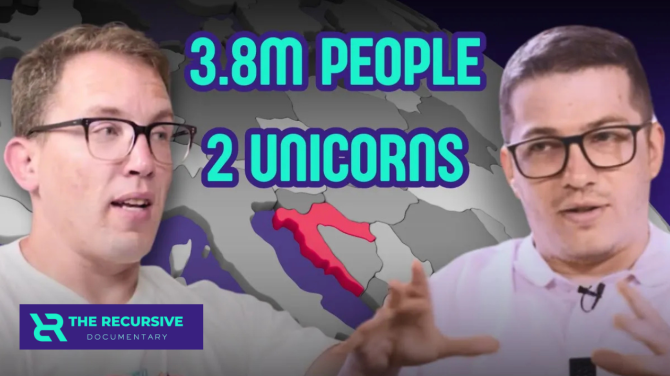At Infobip Shift’s Startup stage in Zadar, Croatia – a small crowd of founders, investors, and industry veterans gathered to discuss a topic that never loses relevance: the warning signs that make a venture‑capitalist say “no”.
Hosted by Lucija Reić, head of the Infobip’s Startup Tribe, the conversation featured David Clark (VC @ Tera Ventures), Jana Budkovskaja (Partner @ Beamline fund), and Božidar Pavlović (Partner & VC @ AYMO Ventures), each offering a slice of the same pie — only from different angles.
Below is the distilled, cleaned‑up version of that discussion, for anyone who wants to pitch smarter, invest wiser, or simply understand what goes on behind the closed doors of a VC meeting.
Attitude first, always
Asked for the earliest “no,” the panel didn’t start with metrics. They started with behavior.
As Jana put it: “Attitude is extremely important. When we meet a founder, we’re looking at a long-term relationship — seven to ten years. If a founder isn’t collaborative at the start, we can’t trust they’ll be later.”
In practice this means the founder’s attitude – how they answer questions, share data, and stay disciplined – is scrutinised as much as the product itself. David added a practical note: Early companies have messy data, but inconsistency, the story changing every call, is a classic red flag.

Jana also pointed out how much investors are willing to help founders, they want to share the experience they’ve gained by screening thousands of decks. “It means that we know some narratives and we know some stories. From the debt, the pitch, the deal, the broken and successful ones; we know where the startup can go and what can happen. We can help you. But if you are the smartest person in the room, then it’s very hard.
“And for me, it’s always like, we’ve been there. Please listen. It’s not about that we want to break your business model or to break your team, but we just want you to know what kind of stories can evolve and how you can avoid some very silly mistakes.”
Words get out…
The swagger — useful in doses, corrosive in excess. “Overconfidence is a frequent red flag. If something sounds too good to be true, it probably is,” Jana warned. She recalled backing a resume-rich founder who pivoted repeatedly before going bankrupt; confidence had become compulsion. And beware of founders building a company just to “be a startup” rather than to solve a problem, added David:
“Some founders want to ‘be a startup’ rather than solving a real problem.”
Panelists agreed that the founders who endure obsess about a customer pain, iterate with evidence, and only pivot when learning actually demands it.
Jana also stressed that any hint of dishonesty triggers an automatic shutdown. She added that she openly shares such red flags with other investors, a practice that keeps the ecosystem honest and saves founders from chasing dead‑end partners.
David captured the cultural drift neatly: “The startup industry is small; reputations travel.” If your operating style veers toward spin, word gets around.

Do your homework – both ways
David offered a comically common example — startups pitching with zero regard for written constraints: “We have clearly stated we only invest in the Nordics and Baltics, but still, every once in a while, a random USA startup reaches out”
Jana followed with her experience on startups that reached out uninformed — or ignorant (however you’d like to take it). “When I say that, hey, we are investing up to 60K in pre-seed, clean tech, Europe, preferably deep tech, nothing else. Why do I get all kinds of decks about HR, or… crypto, gazillion crypto decks? And they are also usually asking, ‘We are closing our five million round, please join.’ I am like, what will my ticket be doing in your five-million-dollar round?”
Preparation also means anticipating questions. Beautifully designed slides don’t compensate for missing essentials. The deck should already contain answers to common investor queries.
“The best way is the answer to all our potential questions; basic questions should be in the deck.”
And remember, funds have to pitch too. As Božidar put it, “We are also a startup to a certain extent. This is our first fund and we’re not that young anymore. We have been bootstrapping for the last three and a half years. Founders should understand that we also have a business model and need to generate returns.”

Broken cap tables
If attitude is the visible red flag, the cap table is the invisible one. Someone from the audience shared a cautionary tale: three years ago, a startup they founded raised from a single angel investor, who took 85% of the company. When they approached VCs for further investments, the door slammed.
Clark didn’t mince words: “Sorry to break it to you, but you were probably employees, not founders. But in general, that’s a red flag. VCs expect a cap table that allows for future dilution.” Jana agreed: “If a single early investor holds more than 50%, it scares VCs.”
The opposite extreme is no better. “Similarly, cap tables with many small investors — 10, 20, 30 — can be messy. Clean them up before a funding round.”
University intellectual-property deals drew a separate warning. “Also, be mindful of university IP deals. Universities can demand large equity stakes and slow decision-making, which is a red flag.”
Solo founders & founder syndrome
Another audience member — “rejected three times by UK VCs for being a solo founder” — asked the perennial question. Why everybody in the end turns down solo founders?
Panelists started of with naming why solo founder are actually great: they are usually deeply focused domain experts but the risk is survivability. The months after funding are a grind, and burnout looms without a partner.
Clark articulated the standard investor bias:
“Teams of two or three are typically more successful because they bring complementary skills — sales, tech, product — and share the workload.” The team point isn’t dogma; it’s risk management.
If early-stage red flags center on attitude, clarity, and structure, later stages have their own pathology: control. “Founder syndrome is a danger in later stages: founders who refuse to let go become bottlenecks,” Jana concluded. The cure is unglamorous and hard: recruit adults, delegate authority, and evolve your job as the company grows.
Red flags aren’t mysterious; they’re patterns
Sloppy preparation, shifting stories, performative confidence, brittle execution, toxic cap tables, and lopsided IP deals will sink a round long before growth stalls.
The fixes? Do the homework, answer the hard questions in writing, structure for future investors, and build for a problem not a pitch; those are all within a founder’s control.
Investors can and do get it wrong, the panelists admitted. But the quickest way to earn a fair hearing is still the simplest: be transparent, be prepared, and show some actual work.







